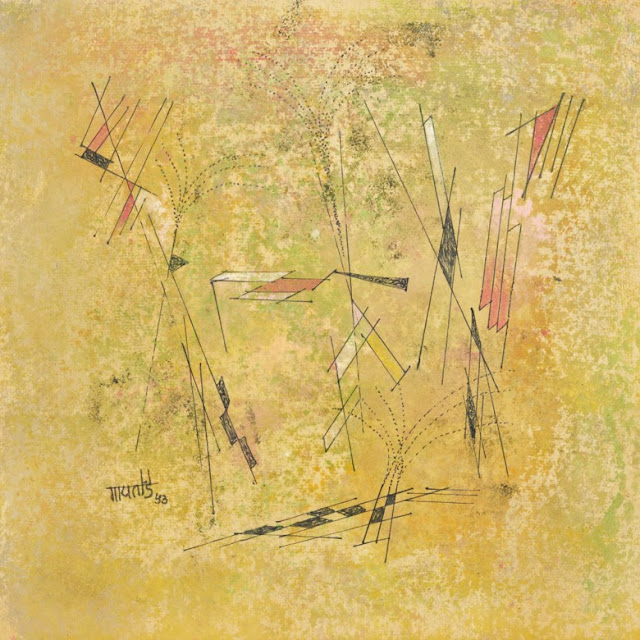Vasudeo Gaitonde (1924–2001) was regarded as one of India's foremost abstract painters. He received Padma Shri Award in 1971.
"Although he was considered an abstract painter, he preferred calling his work “non-objective”, and believed that “there is no such thing as abstract art.” Gaitonde’s paintings, evocative of subliminal depths, are known for their spiritual quality and characteristic silence that is as meditative as it is eternal and momentous. The plain, large surfaces of layered paint possess an inherent quality of light. The textural structure along with the interplay of colour is the main aspect of his works. His compositions, inspired by zen philosophy reveals his speech and emotes silence. Art, for Gaitonde, was a process complete in itself. In exploring his inner spaces and transient realities, it helped him move towards himself. His paintings bring out fact that the process is the result. He worked with various mediums, and used a roller and palette knives to create his own layered texture. Over the years, he evolved as a painter who was increasingly more meticulous. "(jnaf.org)































































